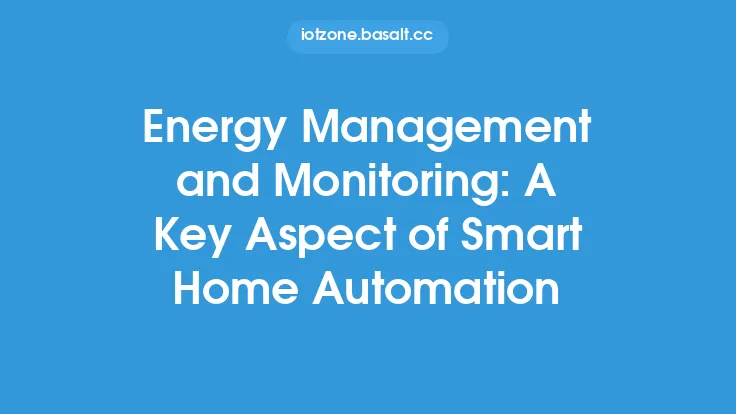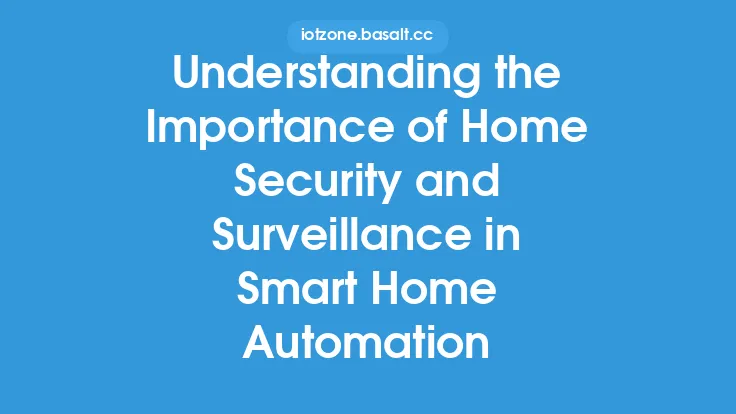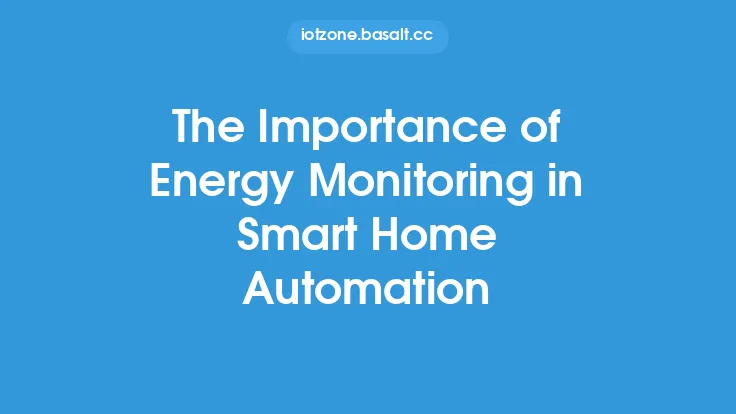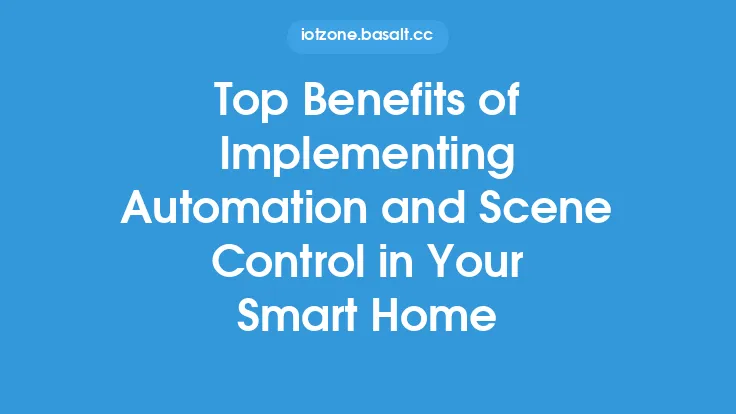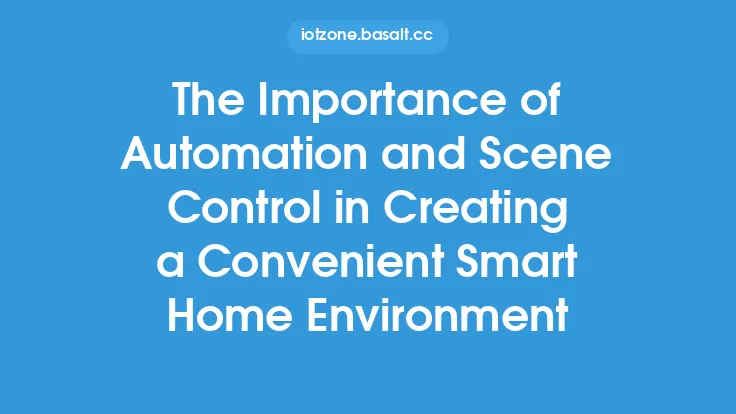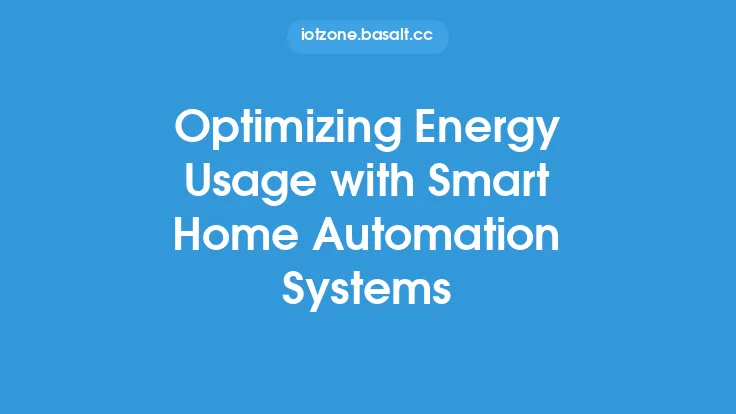The concept of smart home automation has revolutionized the way we live and interact with our living spaces. One of the key aspects of smart home automation is energy management and monitoring, which enables homeowners to optimize their energy consumption and reduce their carbon footprint. A crucial component of energy management is energy harvesting and storage, which involves capturing and storing energy from various sources to power smart home devices and systems. In this article, we will delve into the world of energy harvesting and storage in smart home automation, exploring the different technologies, techniques, and benefits associated with this innovative field.
Introduction to Energy Harvesting
Energy harvesting refers to the process of capturing and converting ambient energy from various sources, such as solar, wind, thermal, and kinetic energy, into electrical energy. This energy can then be used to power smart home devices, reducing the reliance on traditional power sources and minimizing energy waste. Energy harvesting technologies have advanced significantly in recent years, enabling the development of efficient and cost-effective solutions for smart home automation. Some of the most common energy harvesting technologies used in smart home automation include photovoltaic cells, thermoelectric generators, and piezoelectric sensors.
Energy Storage Solutions
Energy storage is a critical component of energy harvesting, as it enables the stored energy to be used when it is needed most. There are several energy storage solutions available for smart home automation, including batteries, supercapacitors, and fuel cells. Batteries are the most commonly used energy storage solution, with lithium-ion batteries being the most popular choice due to their high energy density and long cycle life. Supercapacitors, on the other hand, offer high power density and rapid charging capabilities, making them ideal for applications that require high peak power. Fuel cells, such as hydrogen fuel cells, offer a clean and efficient way to store energy, but are still in the early stages of development for smart home automation.
Types of Energy Harvesting Technologies
There are several types of energy harvesting technologies used in smart home automation, each with its own advantages and disadvantages. Solar energy harvesting, for example, involves the use of photovoltaic cells to convert sunlight into electrical energy. This technology is particularly useful for smart homes with large windows or solar panels. Wind energy harvesting, on the other hand, involves the use of wind turbines to generate electricity from wind energy. This technology is more suited for smart homes located in areas with high wind speeds. Thermal energy harvesting involves the use of thermoelectric generators to convert heat into electrical energy, while kinetic energy harvesting involves the use of piezoelectric sensors to generate electricity from mechanical vibrations.
Energy Harvesting and Storage Systems
Energy harvesting and storage systems are designed to capture and store energy from various sources, and then use that energy to power smart home devices and systems. These systems typically consist of an energy harvesting module, an energy storage module, and a power management module. The energy harvesting module is responsible for capturing energy from the ambient environment, while the energy storage module stores the harvested energy for later use. The power management module regulates the flow of energy between the energy harvesting module, the energy storage module, and the smart home devices. Energy harvesting and storage systems can be designed to be self-sustaining, meaning they can operate independently of the grid, or they can be grid-connected, allowing for seamless integration with the traditional power grid.
Benefits of Energy Harvesting and Storage
The benefits of energy harvesting and storage in smart home automation are numerous. For one, energy harvesting and storage can significantly reduce energy consumption and lower utility bills. By capturing and storing energy from ambient sources, smart homes can reduce their reliance on traditional power sources and minimize energy waste. Energy harvesting and storage can also provide a backup power source during outages, ensuring that critical systems remain operational. Additionally, energy harvesting and storage can enable the development of net-zero energy homes, which produce as much energy as they consume over the course of a year.
Challenges and Limitations
While energy harvesting and storage offer numerous benefits, there are also several challenges and limitations associated with these technologies. One of the main challenges is the intermittent nature of ambient energy sources, which can make it difficult to ensure a stable and reliable power supply. Energy storage solutions, such as batteries, can also be expensive and have limited lifetimes. Additionally, energy harvesting and storage systems can be complex and require sophisticated power management systems to regulate the flow of energy. Furthermore, the efficiency of energy harvesting technologies can be affected by various factors, such as weather conditions, temperature, and humidity.
Future Developments and Trends
The future of energy harvesting and storage in smart home automation is exciting and rapidly evolving. Advances in technology are enabling the development of more efficient and cost-effective energy harvesting and storage solutions. For example, the development of perovskite solar cells is expected to significantly improve the efficiency of solar energy harvesting. Additionally, the use of artificial intelligence and machine learning algorithms is expected to optimize energy harvesting and storage systems, enabling them to adapt to changing energy demands and ambient conditions. The integration of energy harvesting and storage with other smart home technologies, such as IoT devices and smart grids, is also expected to enable the development of more efficient and sustainable smart home systems.
Conclusion
Energy harvesting and storage are critical components of smart home automation, enabling homeowners to optimize their energy consumption and reduce their carbon footprint. By capturing and storing energy from ambient sources, smart homes can reduce their reliance on traditional power sources and minimize energy waste. While there are several challenges and limitations associated with energy harvesting and storage, advances in technology are enabling the development of more efficient and cost-effective solutions. As the demand for smart home automation continues to grow, the importance of energy harvesting and storage will only continue to increase, driving innovation and development in this exciting and rapidly evolving field.
